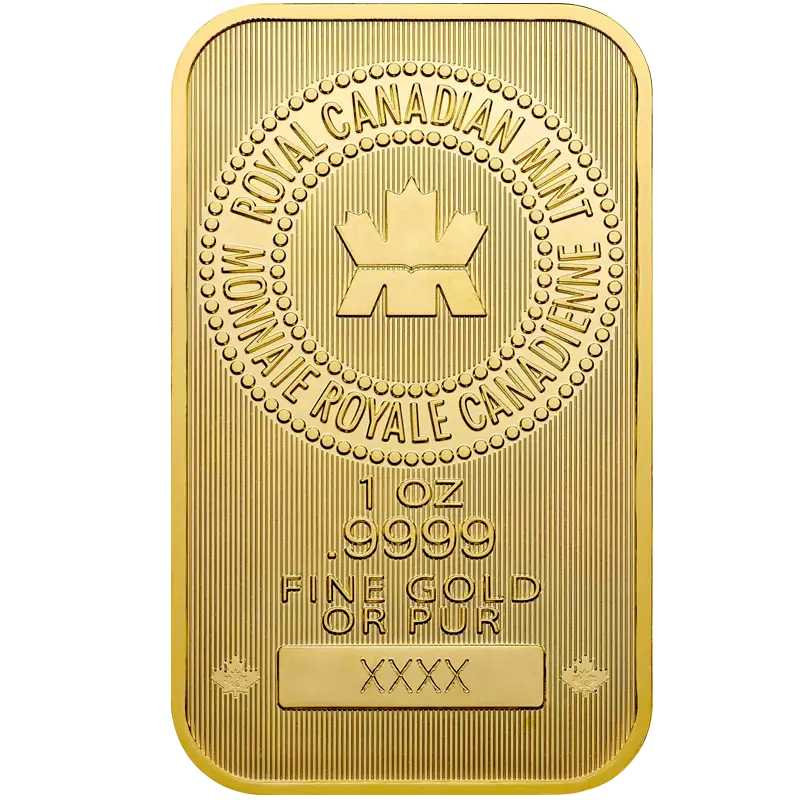Exploring Precious Metals as Investment
Precious metals have long held a fascination for humanity. Beyond their intrinsic beauty, these metals have been treasured for their ability to preserve wealth and hedge against economic uncertainties. In today’s complex investment landscape, the allure of precious metals as a safe haven remains strong. But with various options available, the question arises: What is the best precious metals investment? In this article, we will explore the different precious metals, their investment merits, and considerations to help you make an informed decision.
Understanding Precious Metals
Unique Qualities
Precious metals possess a set of unique qualities that have contributed to their enduring allure and value throughout history. These qualities, including rarity, durability, and aesthetic appeal, distinguish them from other materials and make them highly sought after.
Types of Precious Metals
These four precious metals have distinct characteristics and serve various purposes in different industries. While gold and silver are often associated with jewelry and investment, platinum and palladium have significant industrial applications, particularly in the automotive sector. Investors often consider these metals as part of their diversified portfolios due to their historical value preservation and potential for price appreciation.
Gold – The Classic Choice
Gold is the classic choice for precious metal investment due to its historical performance, role as a store of value, and appeal as a hedge against economic uncertainties.
Characteristics: Gold is arguably the most famous precious metal, known for its lustrous, yellow appearance. It is highly malleable, ductile, and resistant to corrosion, making it ideal for various applications.
Uses: Gold’s primary uses include jewelry, bullion coins, and bars. It is also used in electronics, dentistry, and aerospace due to its excellent conductivity and resistance to tarnish. Furthermore, gold serves as a store of value and a hedge against inflation and economic uncertainty.
Silver – The Affordable Alternative
Silver is an attractive and more affordable alternative to gold, with a dual role as an investment and industrial metal. It also holds potential for price appreciation.
Characteristics: Silver is a white, lustrous metal that is slightly less dense and more abundant than gold. It is highly conductive and possesses antibacterial properties.
Uses: Silver has a wide range of applications, including jewelry, tableware, and decorative items. Its electrical conductivity makes it crucial in electronics and photography. Silver is also used in the production of solar panels and water purification systems. Like gold, it can be an investment asset and is valued for its potential price appreciation.
Platinum – The Precious Metal of Industrial Excellence
Platinum stand out due to their industrial applications, particularly in the automotive industry, and offer unique investment merits
Characteristics: Platinum is a dense, silvery-white metal that is resistant to corrosion. It is rarer than gold and silver, which contributes to its high value.
Uses: Platinum has industrial applications, particularly in catalytic converters for vehicles to reduce emissions. It is also used in jewelry, particularly for high-end pieces. Investment in platinum is considered a hedge against industrial and economic fluctuations.
Palladium – The Versatile Industrial Metal
This industrial demand has driven up palladium prices in recent years, making it an attractive investment option. While less known than gold or silver, palladium’s unique role in emissions control and its potential for price appreciation make it an intriguing choice for investors.
Characteristics: Palladium is another silvery-white metal, and like platinum, it is corrosion-resistant. It is a relatively rare precious metal.
Uses: Palladium’s primary use is in catalytic converters for gasoline-powered vehicles. Its ability to convert harmful emissions into less toxic substances makes it crucial for reducing air pollution. Palladium is also used in electronics and the production of white gold in jewelry. As with other precious metals, it can be an investment to potentially benefit from price appreciation.
When deciding to invest in precious metals, it’s essential to understand the unique attributes and market dynamics of each metal and align your investment choices with your financial goals and risk tolerance. Diversifying your portfolio with a mix of these precious metals can provide a well-rounded approach to preserving and growing your wealth.
Investment Opportunities
Let’s discuss various investment options available for precious metals, including physical ownership, ETFs (Exchange-Traded Funds), mining stocks, and futures contracts, and explore how these investment vehicles work along with their pros and cons:
Physical Ownership
Physical ownership involves purchasing and holding physical precious metals, such as gold or silver, in the form of coins, bars, or bullion. Investors can choose to store these metals at home, in a safe deposit box, or in a secure storage facility.
Pros
Tangible Asset: Owning physical metals provides a tangible store of value that you can touch and see.
Privacy: Transactions involving physical metals can be private, as they do not necessarily require third-party involvement.
Cons
Storage Costs:Storing precious metals securely can be expensive, and the cost can erode returns.
Security Risks: Safeguarding physical metals from theft or damage can be a concern.
Illiquidity: Selling physical metals can be less convenient and more time-consuming compared to other investment options
ETFs (Exchange-Traded Funds)
Precious metal ETFs are investment funds that hold physical metals or derivatives tied to the metals’ prices. Investors buy shares of these ETFs on stock exchanges, allowing them to gain exposure to the metals’ price movements without owning physical metal.
cons
Management Fees: Investors typically incur management fees for ETFs.
Counterparty Risk: Some ETFs use derivatives, which can introduce counterparty risk.
Lack of Physical Ownership: ETF investors do not own physical metals, which may matter to some.
Pros
Liquidity: ETF shares are traded on stock exchanges, making buying and selling easy and liquid.
Diversification: ETFs often hold a diversified basket of precious metals, reducing individual metal risk.
Mining Stocks
Investing in mining stocks involves buying shares of companies engaged in the exploration, production, or distribution of precious metals. The value of these stocks is influenced by both metal prices and the company’s performance.
Cons
Stock Market Volatility: Mining stocks can be subject to stock market fluctuations and risks associated with the mining industry.
Company-Specific Risks: Individual company performance, management decisions, or operational issues can affect stock values.
Indirect Exposure: The performance of mining stocks may not always directly mirror the price movements of the underlying metals.
Pros
Potential for Growth: Mining stocks can offer substantial upside potential if the company discovers or produces precious metals successfully.
Dividends: Some mining companies pay dividends to shareholders.
Futures Contracts
Futures contracts are agreements to buy or sell a specified quantity of a precious metal at a predetermined price on a future date. These contracts are traded on commodity futures exchanges.
Cons
High Risk: Futures trading can be highly speculative and risky, with the potential for significant losses.
Complexity: Futures markets require a good understanding of commodity trading and may not be suitable for all investors.
Expiration Dates: Futures contracts have expiration dates, requiring active management and potentially rolling positions.
Pros
Leverage: Futures contracts allow for leverage, potentially amplifying returns.
Hedging: Futures contracts can be used for hedging purposes by businesses in the precious metal industry.
Gold IRA
You are literally turning part of your retirement into pure, solid gold.
A gold IRA is a self-directed individual retirement account that invests in physical gold as well as in other precious metals. Can serve as a good hedge against inflation but is also concentrated in a single asset class.
Pros
- Inflation Hedge and Stability: Gold’s reputation as a store of value and its ability to counteract the erosive effects of inflation can fortify your retirement savings.
- Secure Storage and Accessibility: The convenience and safety of storing physical gold, coupled with its liquidity, allow for easy access to funds during market fluctuations.
- Tax Benefits: Gold IRAs offer potential tax advantages over ordinary IRAs, with taxes based on the melt down value rather than the market value.
- Flexibility: Transferring funds to a self-directed IRA (SDIRA) or transitioning back to a conventional IRA incur no penalties, offering flexibility in your investment strategy.
Cons
- Maintenance and Storage Costs: Gold IRAs come with maintenance and storage fees, factored based on your holdings’ value, impacting overall returns.
- Price Volatility: Gold’s price can exhibit swift fluctuations, impacting the value of your investment over shorter periods.
Factors to Consider
key factors to consider when choosing a precious metal investment:
Investment Goals:
Determine your primary investment objectives, whether it’s wealth preservation, capital appreciation, portfolio diversification, or hedging against economic uncertainty.
Risk Tolerance:
Assess your comfort level with risk. Precious metal investments can vary in terms of volatility and risk exposure. Consider how much fluctuation in value you can tolerate.
Market Conditions:
Analyze the current economic and financial environment. Consider factors such as inflation rates, currency stability, geopolitical events, and interest rates, as these can influence precious metal prices.
Time Horizon:
Decide on your investment time frame. Precious metals can be suitable for both short-term and long-term investors, so align your investment horizon with your goals.
Precious Metal Selection:
Choose the specific precious metal(s) you want to invest in (e.g., gold, silver, platinum, palladium) based on their historical performance, market outlook, and your preferences.
Investment Vehicle:
Decide on the investment vehicle that best suits your needs, which could include physical ownership, ETFs, mining stocks, or futures contracts. Each has its pros and cons.
Portfolio Diversification:
Assess how precious metals fit into your overall investment portfolio. Consider diversifying across various asset classes to spread risk effectively.
Storage and Costs:
Evaluate the costs associated with your chosen investment. This includes purchase premiums, storage fees (if applicable), insurance costs, and transaction fees.
Tax Considerations:
Understand the tax implications of your precious metal investment, as tax rules can vary depending on your location and the type of investment.
Research and Education:
Conduct thorough research on the precious metal market, including supply and demand dynamics, historical price performance, and future outlook. Stay informed about market trends and news.
Consider seeking advice from a financial advisor or investment professional who can provide guidance tailored to your financial situation and objectives.
By carefully considering these factors, you can make a well-informed decision when choosing a precious metal investment that aligns with your goals, risk tolerance, and the prevailing market conditions.
Diversification and Risk Management:
Diversifying your investment portfolio, including a mix of assets like stocks, bonds, real estate, and precious metals, is crucial for risk management. Precious metals serve as effective tools for hedging and diversification.
Making an Informed Decision:
Making an informed decision when investing in precious metals involves thorough research, consultation with financial advisors, and a clear understanding of personal financial objectives.
In the world of investments, precious metals continue to shine as a valuable asset class. While each precious metal has its unique characteristics and investment appeal, the “best” precious metal investment ultimately depends on individual goals and circumstances. Whether it’s gold’s historical stability, silver’s affordability, or the industrial potential of platinum and palladium, one thing remains clear: the allure of precious metals endures, offering a timeless way to preserve and grow wealth in an ever-changing financial landscape.
Prudential Metals Group’s Investment Process:
Build your future with experts guidance
1 Open An Account
Our account manager will help you fill out an application to get you started. Once you have your account set up, we will link you with a precious metals IRA custodian.
2 Sign Transfer Document
Leave the complexities to us as we facilitate the transfer of funds for you. We collaborate directly with the precious metals custodian to rollover assets from your 401(k) or IRA to your Prudential Metals Group account.
3 Acquire Precious Metals
Your purchased will be securely shipped to a trusted depository for added insurance and protection, or directly to your doorstep within days (conditions apply). Rest assured, our dedicated team will provide you with comprehensive evidence once the entire process is successfully concluded.

Should You Invest in a Gold IRA?
Many investors choose gold as a way to diversify their portfolio, either by investing in a gold IRA or by directly purchasing the metal. While gold can certainly have a place in a well-diversified portfolio, it is important to balance the risks of buying gold compared to other assets.
When saving for retirement, it is important to choose assets that will provide a return over time. Unlike stocks and bonds, gold does not pay any dividend or yield to the owner. The only opportunity for profit comes from the appreciation of the gold price itself. Gold values have historically outpaced inflation and doubled in value every 10 years.
How Do You Buy Gold in an IRA?
There are two ways to invest in gold through an IRA. One way is to set up a self-directed gold IRA, which allows you to buy physical gold and silver with retirement funds. It is also possible to invest in a mutual fund or ETF that invests in precious metals, although this is not the same as owning physical bullion.
What Is IRA Eligible Gold?
Only certain gold investments are allowed in a gold IRA. Bullion coins are allowed in an IRA, provided that they are legal tender and have a fineness of 99.5% or better. Bullion bars and rounds are also permitted, provided that they have a fineness greater than 99.9%.
FREE GOLD IRA GUIDE
Protect Your Wealth With Gold & Silver
Get the facts on investing in gold and silver with this comprehensive Gold IRA Guide from Prudential Metals Group. In-depth advice, expert guidance & smart strategies – all what you need to know to start investing in these metals!
YOU MAY ALSO LIKE !!














